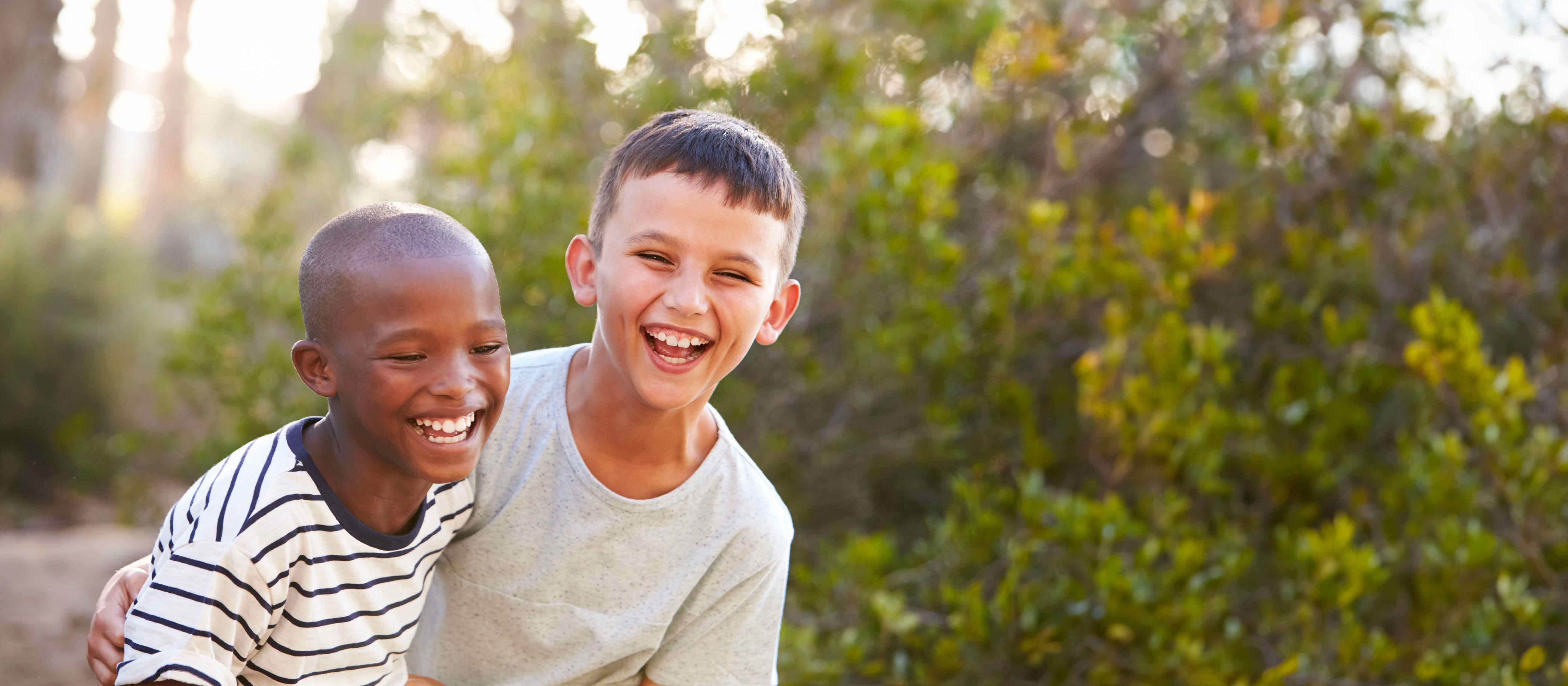GIVE NOW before 2025 ends—your gift will be doubled to help children in need. Click here to 2x your impact!

Ranked nationally in pediatric care.
Arkansas Children's provides right-sized care for your child. U.S. News & World Report has ranked Arkansas Children's in seven specialties for 2025-2026.

It's easier than ever to sign up for MyChart.
Sign up online to quickly and easily manage your child's medical information and connect with us whenever you need.

We're focused on improving child health through exceptional patient care, groundbreaking research, continuing education, and outreach and prevention.

When it comes to your child, every emergency is a big deal.
Our ERs are staffed 24/7 with doctors, nurses and staff who know kids best – all trained to deliver right-sized care for your child in a safe environment.

Arkansas Children's provides right-sized care for your child. U.S. News & World Report has ranked Arkansas Children's in seven specialties for 2025-2026.

Looking for resources for your family?
Find health tips, patient stories, and news you can use to champion children.

Support from the comfort of your home.
Our flu resources and education information help parents and families provide effective care at home.

Children are at the center of everything we do.
We are dedicated to caring for children, allowing us to uniquely shape the landscape of pediatric care in Arkansas.

Transforming discovery to care.
Our researchers are driven by their limitless curiosity to discover new and better ways to make these children better today and healthier tomorrow.

We're focused on improving child health through exceptional patient care, groundbreaking research, continuing education, and outreach and prevention.

Then we're looking for you! Work at a place where you can change lives...including your own.

When you give to Arkansas Children's, you help deliver on our promise of a better today and a healthier tomorrow for the children of Arkansas and beyond

Become a volunteer at Arkansas Children's.
The gift of time is one of the most precious gifts you can give. You can make a difference in the life of a sick child.

Join our Grassroots Organization
Support and participate in this advocacy effort on behalf of Arkansas’ youth and our organization.

Learn How We Transform Discovery to Care
Scientific discoveries lead us to new and better ways to care for children.

Learn How We Transform Discovery to Care
Scientific discoveries lead us to new and better ways to care for children.

Learn How We Transform Discovery to Care
Scientific discoveries lead us to new and better ways to care for children.

Learn How We Transform Discovery to Care
Scientific discoveries lead us to new and better ways to care for children.

Learn How We Transform Discovery to Care
Scientific discoveries lead us to new and better ways to care for children.

Learn How We Transform Discovery to Care
Scientific discoveries lead us to new and better ways to care for children.

When you give to Arkansas Children’s, you help deliver on our promise of a better today and a healthier tomorrow for the children of Arkansas and beyond.

Your volunteer efforts are very important to Arkansas Children's. Consider additional ways to help our patients and families.

Join one of our volunteer groups.
There are many ways to get involved to champion children statewide.

Make a positive impact on children through philanthropy.
The generosity of our supporters allows Arkansas Children's to deliver on our promise of making children better today and a healthier tomorrow.

Read and watch heart-warming, inspirational stories from the patients of Arkansas Children’s.

Hello.

Arkansas Children's Hospital
General Information 501-364-1100
Arkansas Children's Northwest
General Information 479-725-6800

Recreational Safety
Recreational Safety Programs work to inform the public about ways to be safe while at play. Being outside and active is important for every child, but parents can use the following information to keep their child safe for every activity. Please choose from the categories below for safety information.
A concussion is a type of mild traumatic brain injury (TBI) that is caused by a bump or a blow to the head. Even a mild blow to the head can be a serious matter. Signs of a concussion may not show up until days or weeks after the injury. Seek medical attention right away if you notice any of the following signs of concussion in your child after a head injury:
- Confusion
- Appears dazed or stunned.
- Loses consciousness
- Headache or complains of “pressure” in head.
- Nausea or vomiting
- Balance problem
- Drowsiness or inability to wake up
Dehydration happens when the amount of fluids that a person is drinking is less than the amount of fluids lost through sweating, urination, diarrhea, or vomiting. Dehydration is very common when exercising outside, and it can lead to more serious problems like heat exhaustion and heat stroke. It's important to stay well hydrated by drinking plenty of water.
CDC, 2024
An all-terrain vehicle (ATV) is a motorized vehicle with three or four low-pressure tires commonly used for farming, hunting and recreation. As the popularity of ATV’s continue to increase, so will the number of unintentional injuries and deaths. Arkansas Children’s Trauma Department reported over 300 ATV injuries seen in the Emergency Room between 2022- 2023. Arkansas Children's goal is to reduce the number of injuries and deaths caused by ATV-related accidents through ATV safety and educational practices.
Always plan your T.R.I.P.S.S.
Training: Before driving your ATV, take an ATV Safety Institute ATV Rider Course. Contact your local University of Arkansas Cooperative Extension Service 4-H Coordinator
Ride Off-road: Always ride on unpaved trails. The tires on ATVs are not made for paved or loose gravel roads. If you drive these roads, you could lose control of the ATV and flip over and crash.
Impairment Danger: Don’t drive while under the influence of drugs or alcohol, driving an ATV takes all of your focus.
Plan Ahead: Plan your trip before you ride, look for hazards and let someone know where you are going.
Single Rider: Most ATVs are made for one rider only.
Safety Equipment: Ride your ATV only when wearing a helmet, boots, long pants, long sleeve shirt and gloves.
Parents should talk to their children about the importance of safely watching for vehicles and crossing the street when walking or riding outside. Wearing a helmet when riding a bicycle or tricycle can lower the risk of injury. Make sure your child wears a helmet on every ride.

Expert Advice: How to Choose the Right Helmet for Your Child
When it comes to picking out a helmet, it is important to find the right one for our child. Follow these guidelines to help ensure maximum safety.
Learn more about choosing the right helmetDrowning is the number one cause of death for children ages 1-4 in Arkansas. For children 5-14, drowning is the second leading cause of death following motor vehicle accidents. Utilizing the 5 Layers of Protection can help parents, guardians, and families decrease the chance of drowning during recreational swimming, boating, and water play.
The 5 Layers of Protection
- Supervision: Identify a designed “Water Watcher” during swim times. If in a group, take turns watching the swimmers.
- Wear A Life Jacket: Life jackets are recommended for inexperienced swimmers and all persons boating on open water.
- Barriers and Alarms: Four-sided fencing, self-latching gates, pool covers, and alarms.
- Water Competency: Take and complete swimming lessons
- Emergency Preparation: Learn CPR
Playgrounds are great places for children to test and grow their physical abilities. But whether they’re playing on a backyard swing set or at a public park, every playground has some dangers. Falls account for 70% of injuries on the playground. Arkansas Children’s strives to ensure children play S.A.F.E. while decreasing falls and other playground injuries. The National Program for Playground Safety implemented the S.A.F.E. playground injury prevention framework. This framework consists of four elements that lay the foundation for safe play areas and are by organizations nationwide.
S.A.F.E. Playgrounds
Supervision: Parents or staff should position themselves where they can observe all children.
Appropriate Environments: Children should play on equipment appropriate for their size, strength, and decision-making abilities.
Fall Surfacing: Appropriate Materials include sand, pea gravel, rubber tile, or rubber mulch.
Equipment Maintenance: A good maintenance plan is consistent and proactive by addressing equipment needs before an accident occurs
(NPPS, 2024)
-
Resource
Product Recalls
Bookmark Product RecallsSign up to receive information regarding product recalls.

Contact an Injury Prevention Expert
Contact an injury prevention expert at 501-364-3400.

